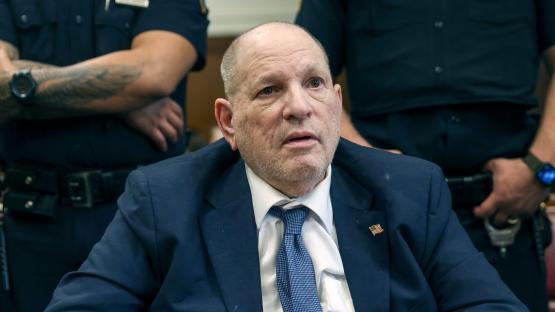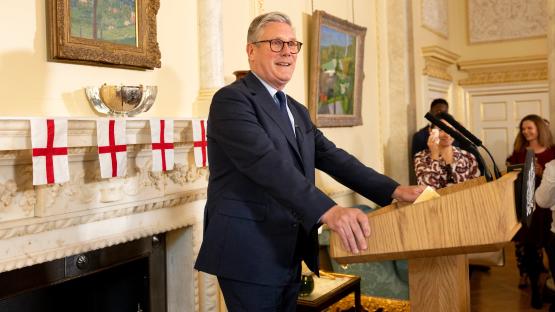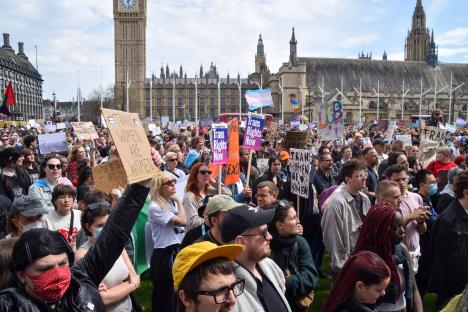Following months of public pressure prompted by a surge in COVID-19 cases, the Ontario government has finally announced its paid sick leave program.
The Ontario COVID-19 Worker Income Protection Program is retroactive, beginning April 19 and ending on Sept. 25. It includes access to three paid sick days, and the province has agreed to reimburse employers 100 per cent of the employee’s wage for up to $200 a day.
Read more: Ontario’s COVID-19 paid sick leave program to include 3 days for workers
For some, the announcement marks a victory for employees that has been a long time coming.
“It's a breakthrough to see this happening,” said Dr. Kate Mulligan, a professor at the University of Toronto's Dalla Lana School of Public Health.
But many are wondering if it's time for other provinces to follow suit.
Where paid sick leave exists in Canada
Currently, there are only two other provinces that provide paid sick leave in Canada: Quebec and Prince Edward Island (P.E.I).
Quebec offers two paid sick days per year after a worker has been employed for three months, while P.E.I. provides workerswho have been employed for five continuous years with one paid sick day per year.
Canada's federal labour code also states that workers can take five unpaid sick days per year, and that federally-regulated employers must offer at least three days of paid sick leave a year.
Mulligan says it's a bit “mystifying” it took Ontario so long to follow suit.
“It really shouldn't be a big deal,” she said. “It's a no-brainer from a public health perspective that people need support to be able to stay home (if they're sick), and that those most essential workers need the most support.”
Read more: Paid sick days vs. federal benefit: Why advocates say both are needed to fight COVID-19
The federal government introduced the Canada Recovery Sickness Benefit last November, which provides $450 after taxes per week for up to four weeks for eligible workers who fall ill from COVID-19.
Many other provinces without paid sick leave plans have urged Ottawa to double that fund through unspent money from the Safe Restart program — something the Liberals have declined to do.
Prime Minister Justin Trudeau told Global News earlier this month that it's up to the provinces to fill gaps in the benefit's coverage.
What other provinces say
On Wednesday, British Columbia passed legislation that ensures workers get up to three hours of paid leave to get vaccinated against COVID-19, retroactive to April 19.
The province also ensures employees' jobs are protected if they take up to three unpaid days off. But the latest provincial budget made no mention of ensuring any of those days are paid.
“I am disappointed the federal government has not seen the importance of a comprehensive national paid sick leave program,” Labour Minister Harry Bains said in a statement to Global News.
“In the light of that, I want to be clear, our government is building a made-in-B.C. program to continue our work in supporting British Columbians through this pandemic,” he added, without specifying what that program could look like.
Manitoba Finance Minister Scott Fielding said in his own statement that his province is also looking at solutions.
“Many employees in Manitoba receive paid sick leave benefits through their employers or collective bargaining agreements, and we are currently considering ways to address gaps in federal programming and provide options to help Manitobans who aren’t currently covered under employee plans,” he said.
Meanwhile, other provinces who responded to Global News made it clear they aren't looking at a provincial paid sick leave program.
A spokesperson for Alberta's labour and immigration ministry instead listed the existing programs that workers can take advantage of, including the Canada Recovery Sickness Benefit (CRSB) and up to three hours of paid leave to get vaccinated.
Alberta also offers up to 14 days of unpaid, job-protected leave for employees who fall ill.
Read more: Labour leaders, NDP call for paid sick and vaccine leave in Manitoba
Speaking to reporters Wednesday, Don Morgan, Saskatchewan’s minister of labour relations and workplace safety, said employers are “increasingly fragile” and could see “serious problems” under a paid sick leave program.
He also suggested money from the federal Safe Restart fund could help provinces pay for such a program.
A spokesperson for Morgan's ministry referred to his comments from earlier in the day.
But Mulligan said having employers pay their workers for sick days is a better financial move long-term than suffering through a COVID-19-related shutdown.
“We know that employers have been really challenged during COVID, just like everyone has, and so I think the government has been reluctant to ask them to do this,” she said.
“But the reality is that it's in the employers' interest to provide these sick days in order to avoid a shutdown … that's much more costly for them. So really, it makes sense all around.”
None of the Atlantic provinces or northern territories answered Global News' requests for comment before publication.
A 'positive step,' but not sufficient
Mulligan says that while Ontario did the right thing by introducing the paid sick leave program, it falls short of what is needed to address self-isolation requirements for COVID-19.
“This is a positive step, but it is not sufficient to meet the public health needs right now,” she said, noting those who test positive for the coronavirus must isolate for a minimum of 10 to 14 days.
“(Three paid days) will support people to get tested, to get vaccinated and to stay home with maybe some initial symptoms. But it doesn't help us to control the spread of COVID if people can't stay home for that longer period.”
Read more: Sask. government marks National Day of Mourning amid pandemic, calls for paid sick leave
Mulligan says minimum wage workers and “those working in high-risk frontline roles” will feel the most pressure.
“You might decide that after those three days, you don't really have an option if you're making minimum wage and you feel that you don't have what you need to pay the bills between now and the several weeks that go by before you are reimbursed,” she said.
“People do live with that level of precarity and those are the people who are not yet fully covered by this program.”
Mikal Skuterud, a labour economist with the University of Waterloo, echoed Mulligan's comments.
“What is the objective of this policy? Well, it's to reduce workplace contagion,” he said. “And I guess the really big question is whether or not this will do that.”
He points to the outbreak at a Canada Post facility in Mississauga, Ont., where around 80 employees have been told to self-isolate after at least 12 workers tested positive.
“They've been really struggling with workplace outbreaks and they have one of the most generous paid sick leave policies in Canada,” he said.
Skuterud also wonders if the spotlight on paid sick leave has “distracted us from other efforts that might actually be more effective.”
Getting COVID-19 vaccines into city hotspots, along with putting rapid tests and rapid antigen tests in the workplace, could be more effective ways to prevent the virus from spreading, he says.
Yet for now, Skuterud says seeing the Ontario government and others listen to people's demands for paid sick days is a positive development.
“It can't do anything but make things better,” he said. “It's not going to make things worse — that's for sure.”
— with files from Global News' Rachel Gilmore





